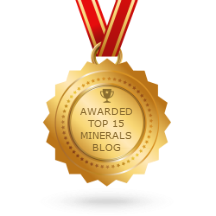I met Bill Johnson for the first time at the SME Annual Meeting in Denver in 2017, where he was inducted into the International Mining Hall of Fame. Later in the year he was in Cape Town to present a keynote lecture at Flotation '17. In 2020 I interviewed him for the blog.
In over 50 years in minerals processing, Bill has made outstanding advances to the treatment of complex ores. He pioneered the use of the paradigm of size-by-size mineral liberation-class behaviour, and is a masterful user of this approach to drive major improvements to mineral processing plant design and performance. He was pivotal to the development of flowsheets and new processes for McArthur River, Mount Isa, Hilton and George Fisher, and has provided highly skilled technical support for a global array of operations. culminating in the development of the IsaMill technology and the Jameson Cell.
His educational and training experience includes teaching undergraduates and supervising postgraduate research together with running “in house” courses on advanced topics for technical staff. Bill is a respected mentor and widely known for his success in developing the professional skills of many minerals processing engineers during his time in the corporate sector and academia.
In this book Bill distills his 50 years of internationally recognised experience in the treatment of complex ores into one publication. He discusses the significant developments in regrinding and cleaning technologies that have taken place from 1970 to 2020 and provides some future directions for primary grinding, roughing, regrinding and cleaning in sulfide flotation circuits to decrease the energy required for grinding in the total system. The decreased energy consumption can be achieved by performing the final stages of liberation of the valuable sulfide minerals mainly in regrinding where the tonnages of solid being processed are lower than in primary grinding.
He uses data and real-world examples to effectively communicate the complexities of the sulfide mineral flotation process. Also included are discussions on the importance of the chemical conditions inside a regrinding mill and the relationships between these chemical conditions and the separation performance of the associated cleaner system.
Ample examples from industry are included to assist the reader, along with over 160 references. A must volume for anyone involved with sulfide mineral flotation.














-EDIT.jpg)





No comments:
Post a Comment
If you have difficulty posting a comment, please email the comment to bwills@min-eng.com and I will submit on your behalf